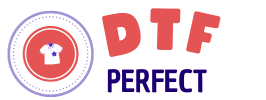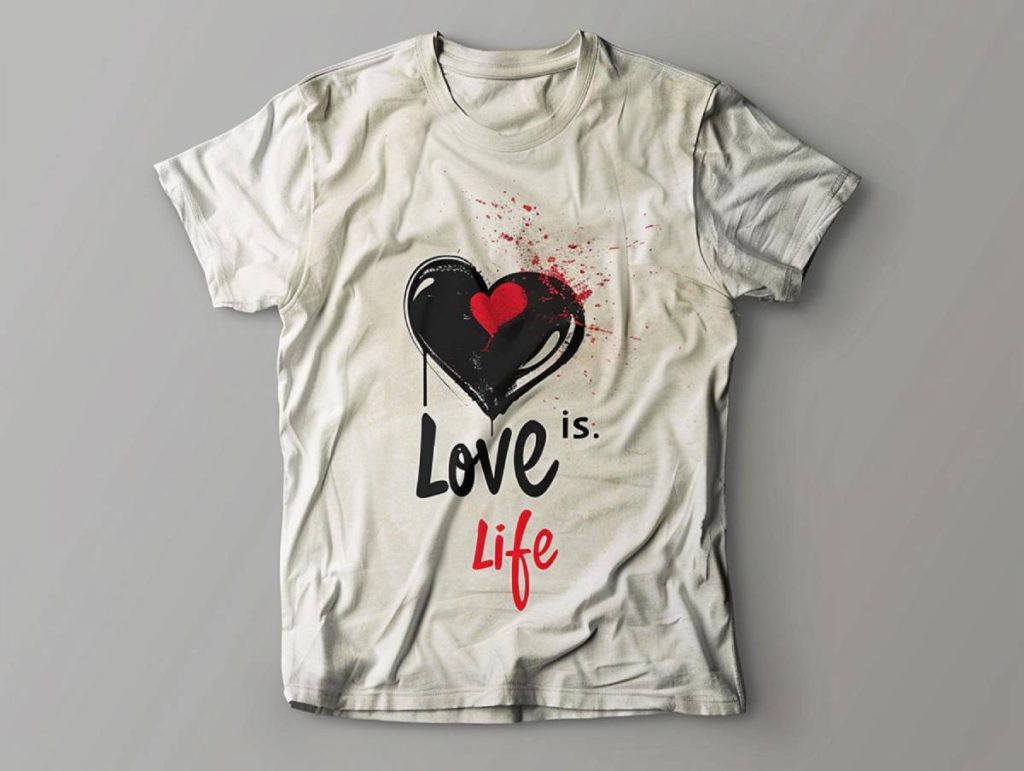UV DTF technology, or UV Direct to Film printing, is revolutionizing the world of textile manufacturing by enhancing color vibrancy and ensuring durability in textile printing. This advanced printing technique allows for the direct transfer of vibrant inks onto fabrics, resulting in eye-catching designs that stand the test of time. With UV DTF printing, manufacturers can achieve a wider range of colors, providing an unmatched level of detail and dynamic intensity that is essential for modern fashion. Moreover, this innovative technology contributes to sustainability efforts in the textile industry by minimizing water usage and employing eco-friendly inks. As consumer demand for high-quality, long-lasting products grows, the integration of UV DTF technology is poised to set a new standard in sustainable textile printing.
Also known as ultraviolet direct-to-film printing, this cutting-edge technique represents a significant evolution in textile printing technology. The UV curing process in this method enhances the overall durability of printed fabrics while maintaining striking color vibrancy that captivates consumers. By utilizing specially formulated inks, direct film UV printing ensures that the colors not only shine but also endure, making this approach a go-to for brands seeking to balance quality and sustainability in their offerings. As the textile sector continues to embrace innovative methods, the transition towards UV-based printing solutions is becoming increasingly essential for meeting contemporary demands.
The Advantages of UV DTF Printing
UV DTF printing brings a host of advantages that position it at the forefront of textile printing technology. One major benefit is its ability to produce stunningly vibrant colors that stand out on any fabric. This technology uses advanced UV inks that reflect light uniquely, enabling designers to achieve richer hues and a broader color gamut compared to traditional methods. Consequently, textiles produced through UV DTF become more than just clothing; they transform into eye-catching fashion statements that appeal to discerning consumers.
Moreover, the intricate detailing that UV DTF technology allows is remarkable. High-resolution images, complex patterns, and fine gradients are easily reproduced, making this printing method ideal for high-end fashion items, sports jerseys, and promotional materials. As a result, brands can deliver products that not only meet the aesthetic demands of their customers but also showcase their commitment to quality and innovation in textile printing.
Enhancing Durability in Textile Printing
Durability is essential in textile printing, especially for items subject to heavy use, such as outdoor apparel or everyday clothing. UV DTF technology excels in this area by providing a hard, protective layer that safeguards prints from fading, cracking, and peeling. As environmental conditions can significantly affect the longevity of printed fabrics, this capability makes UV DTF a preferred choice for manufacturers aiming for long-lasting quality.
Additionally, UV DTF prints exhibit outstanding resistance to the elements. The inks, cured with UV light, form an impermeable barrier that defends against UV degradation and harsh weather impacts. Consequently, textiles printed with this technology maintain their vibrant colors and structural integrity over time, appealing to consumers looking for durability without compromising style.
Sustainability in Textile Printing with UV DTF
As the textile industry faces mounting pressure to adopt sustainable practices, UV DTF technology emerges as a viable solution. Traditional textile printing methods require significant water use, leading to environmental challenges. In contrast, UV DTF offers a more eco-friendly approach through precise ink application that minimizes waste, aligning with contemporary sustainability goals in the industry.
Eco-conscious manufacturers can also choose from various environmentally friendly UV DTF inks. Such options enable them to produce high-quality printed textiles while reducing their ecological footprint. This shift towards sustainability not only addresses growing consumer demands for greener products but also positions brands as forward-thinking leaders in the market.
Market Trends Driving UV DTF Adoption
Recent market trends indicate a clear shift towards UV DTF technology among textile manufacturers. With customization and on-demand printing gaining traction among consumers, brands increasingly recognize the need for flexible solutions that UV DTF provides. This technology allows for rapid production times and the creation of unique items, ensuring customer satisfaction and loyalty in a competitive landscape.
Furthermore, major investments in UV DTF technology by renowned textile companies reflect a significant commitment to enhancing digital capabilities and streamlining production processes. According to industry reports, this trend embodies a broader shift towards quality, customer-centric designs, and fast turnaround times, underscoring UV DTF technology’s pivotal role in the evolution of the textile industry.
Innovations in UV DTF Technology
The landscape of UV DTF technology is continuously evolving, with recent innovations aimed at improving its efficiency and expanding its capabilities. Manufacturers are exploring the integration of smart technology that enhances the efficiency of ink usage while pushing the boundaries of print quality. This ongoing development is vital, as it promises to further elevate the standards of color accuracy and vibrancy in textile printing.
Moreover, advancements in ink formulations are leading to improved performance in terms of elasticity and flexibility, allowing for new substrates to be used in the UV DTF process. As companies race to stay ahead in this rapidly transforming market, these innovations are critical for those looking to capitalize on the many advantages UV DTF printing offers to both manufacturers and consumers.
The Future of UV DTF in the Textile Industry
The future of UV DTF technology looks increasingly promising as it integrates with the broader trends shaping the textile industry. As more brands recognize the benefits of high-quality, visually appealing products, the demand for UV DTF solutions is expected to grow. This growing interest is also fueled by the increasing consumer preference for personalized and sustainable textiles, prompting manufacturers to adapt to these evolving requirements.
As innovation continues to drive improvements in UV DTF technology, the prospects for its use in textile printing will likely expand further, opening doors to new applications and markets. By leveraging UV DTF technology, companies can not only fulfill the aesthetic needs of their consumers but also align themselves with the sustainability goals that are becoming paramount in the industry.
Frequently Asked Questions
What is UV DTF printing and how does it work?
UV DTF printing, or UV Direct to Film printing, is a modern textile printing technology that uses ultraviolet light to cure inks applied to a transfer film. This reliable process bonds vibrant colors directly onto fabrics, enhancing both color vibrancy and durability in the textile printing industry.
How does UV DTF technology compare to traditional textile printing methods?
Unlike traditional textile printing methods, such as screen printing, UV DTF technology prints directly onto a film that can be transferred to fabrics, eliminating several intermediary steps. This results in superior color vibrancy, intricate detailing, and increased durability, making it a strong alternative in the textile printing technology landscape.
What are the durability benefits of using UV DTF technology for textiles?
Fabrics printed using UV DTF technology offer significant durability due to a hard protective layer formed during the UV curing process. This makes them resistant to fading, cracking, and peeling, ensuring that the vibrant colors remain intact even under environmental stress, which is crucial for everyday clothing and outdoor gear.
Is UV DTF printing environmentally sustainable?
Yes, UV DTF printing is considered a more sustainable textile printing technology. It reduces water use compared to traditional methods and can employ eco-friendly inks, aligning with the growing demand for environmentally responsible manufacturing practices in the textile industry.
What trends are driving the popularity of UV DTF technology in textile printing?
The rising demand for customization and on-demand printing in the fashion and textile sectors is a key trend driving the popularity of UV DTF technology. Additionally, investments by major manufacturers in advanced UV DTF systems are promoting faster production times and improved quality, further enhancing its adoption in the market.
What recent advancements have been made in UV DTF technology?
Recent advancements in UV DTF technology include the integration of smart technology to improve efficiency, enhancements in ink formulations for better color accuracy and vibrancy, and expanded compatibility with various substrates. These innovations are expected to increase the adoption of UV DTF in the textile industry.
| Feature | Description |
|---|---|
| UV DTF Technology | A printing method that utilizes UV light to cure inks directly onto transfer film for enhanced durability and vibrancy. |
| Color Vibrancy | Produces vibrant colors with a wider color gamut and intricate detailing ideal for high-end textiles. |
| Durability | Resistant to fading, cracking, and peeling with a protective layer enhancing longevity. |
| Environmental Benefits | Reduced water usage and availability of eco-friendly inks align with sustainability goals. |
| Market Trends | Growing demand for customization and investments in UV DTF technology by textile manufacturers. |
| Recent Developments | Advancements in smart technology, ink efficiency, and substrate compatibility are emerging. |
Summary
UV DTF technology plays a revolutionary role in enhancing the vibrancy and durability of textiles. This advanced printing method leverages ultraviolet light to cure inks directly on fabric, resulting in eye-catching colors and long-lasting prints. As sustainability becomes a critical concern for manufacturers, the eco-friendly attributes of UV DTF technology, such as reduced water consumption and the use of environmentally friendly inks, make it increasingly favorable. Brands that adopt this cutting-edge technology position themselves competitively, catering to consumer demands for quality, customization, and sustainability. The future of the textile industry is indeed bright with UV DTF technology leading the way towards greater innovation and environmental responsibility.



